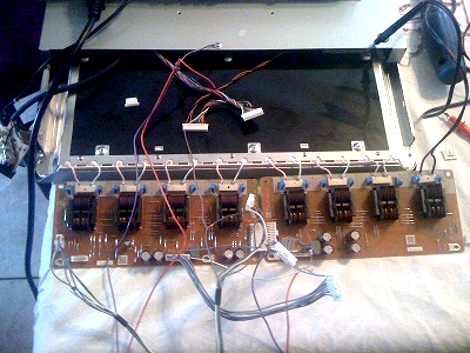
[Andreas] found that his home theater PC would not boot one day. Oddly, if he disconnected his HDMI cable from his TV, it would boot fine. While most of us would have dug into the PC, he realized that it was a signal from the TV that was incorrect. Luckily, LG had included a full schematic with the TV. What he was able to figure out, using a home made snooper was that the EDID eeproms had somehow become corrupted. Not to worry, [Andreas] slapped together a full blown I2C interface and prepared to reprogram them with the correct data. He noticed, however, that the eeproms were write protected. On a whim, he decided to write to them any way and found that it was successful. He has some theories as to why they were writable, but says that he doesn’t want to pull the TV back apart to confirm.
[thanks evlapix]















